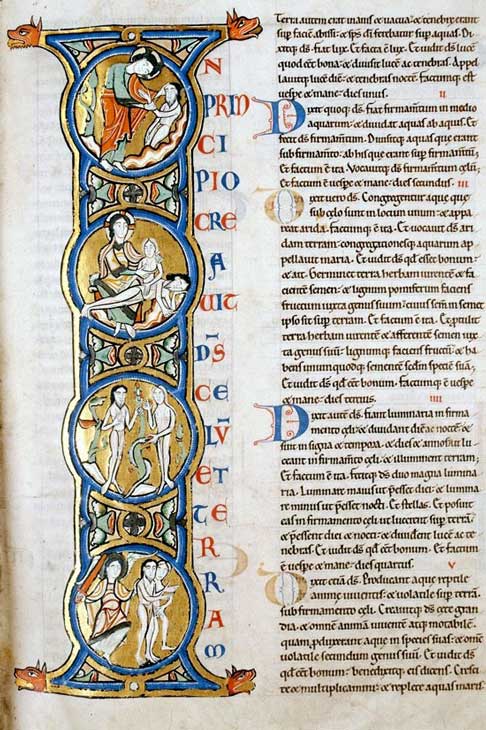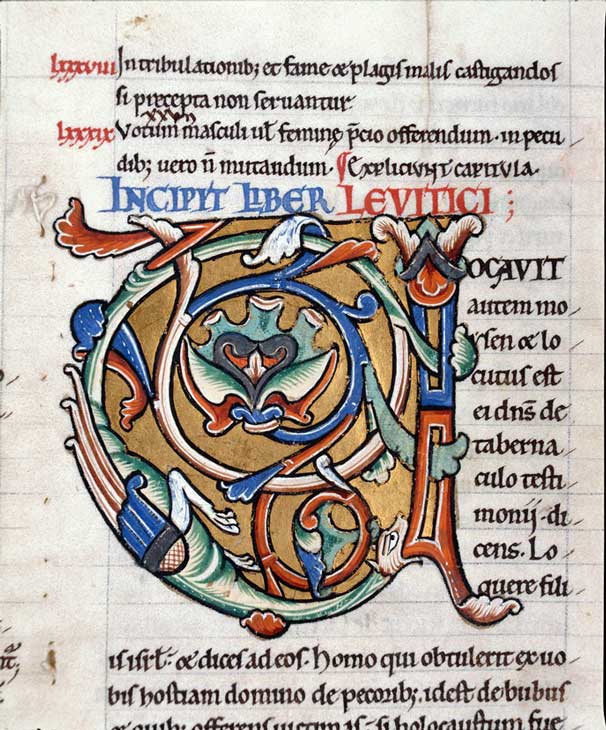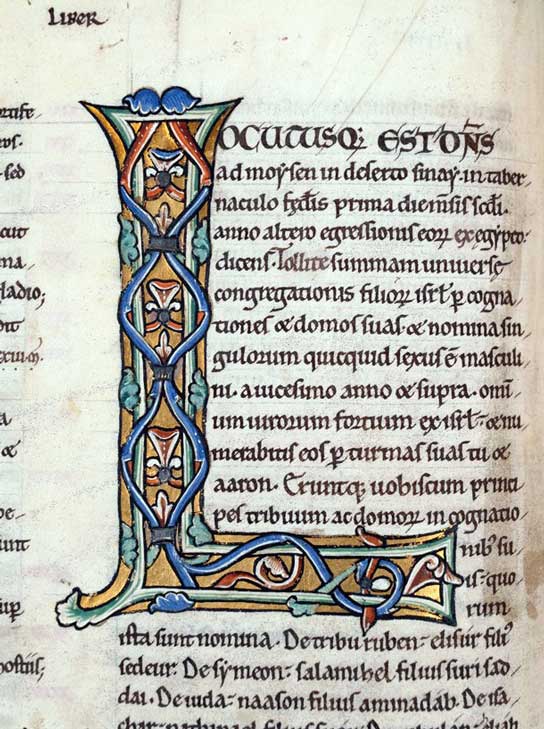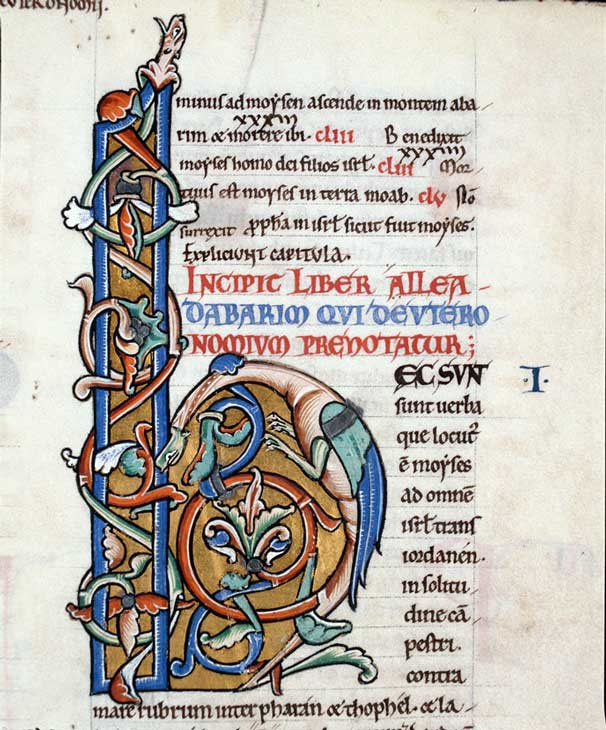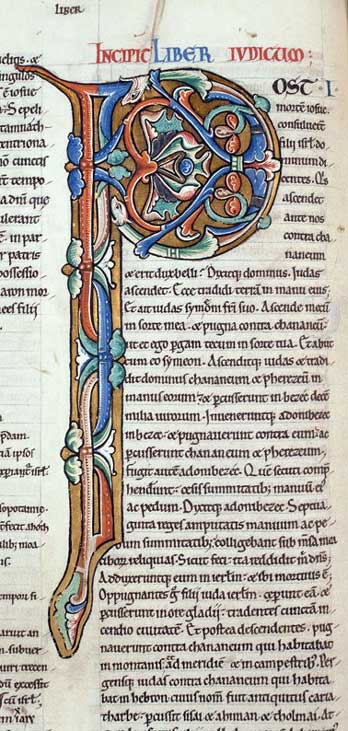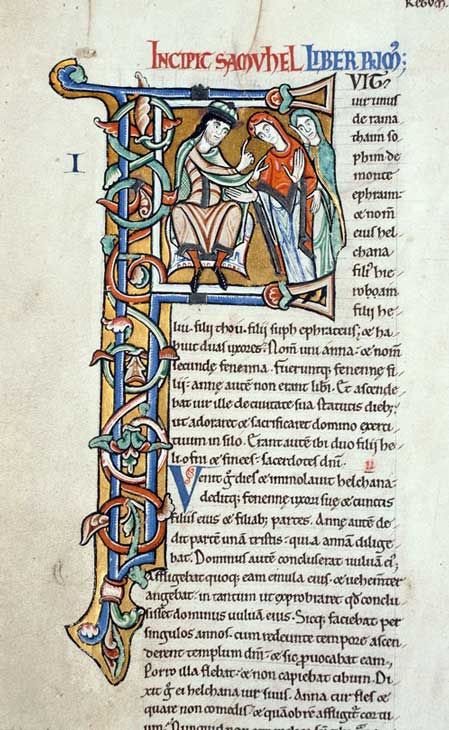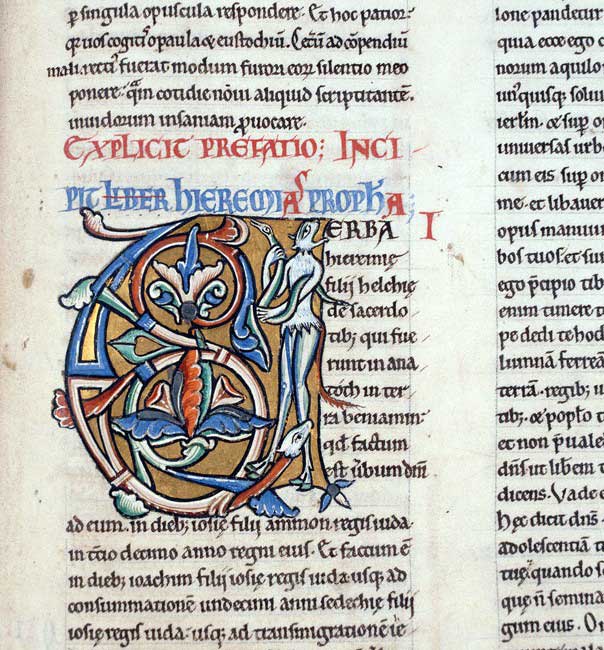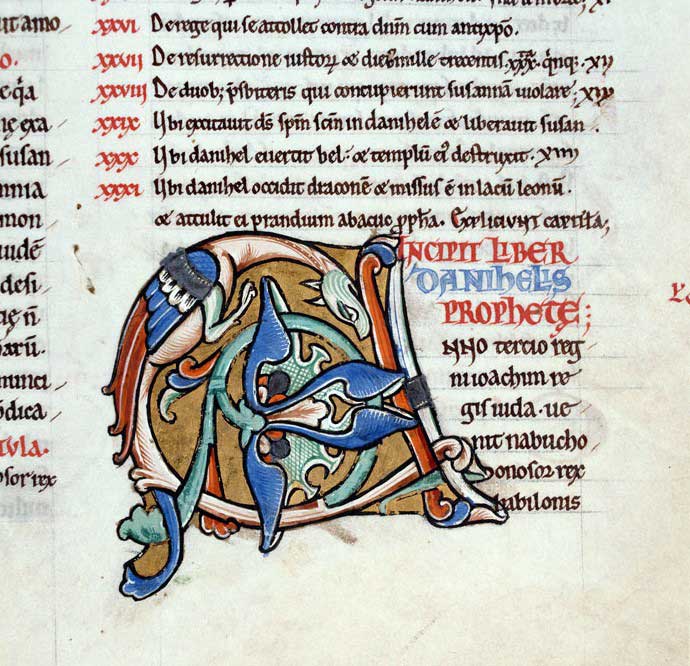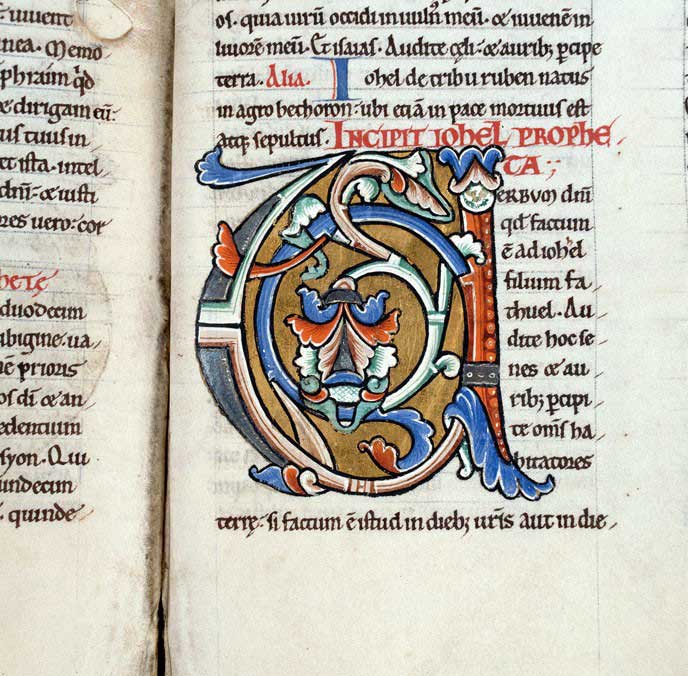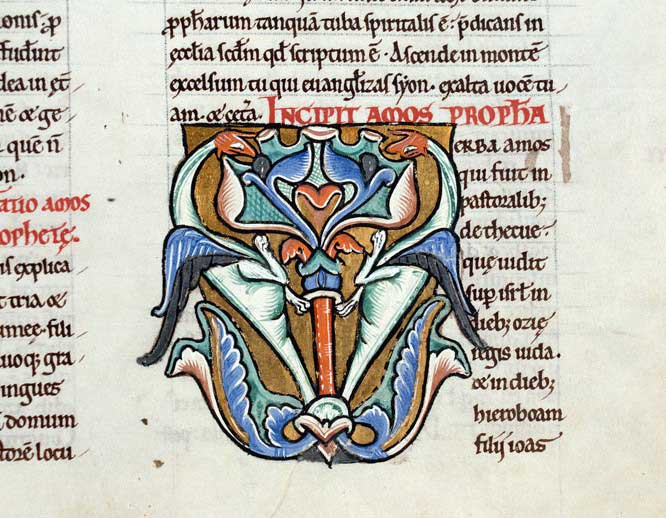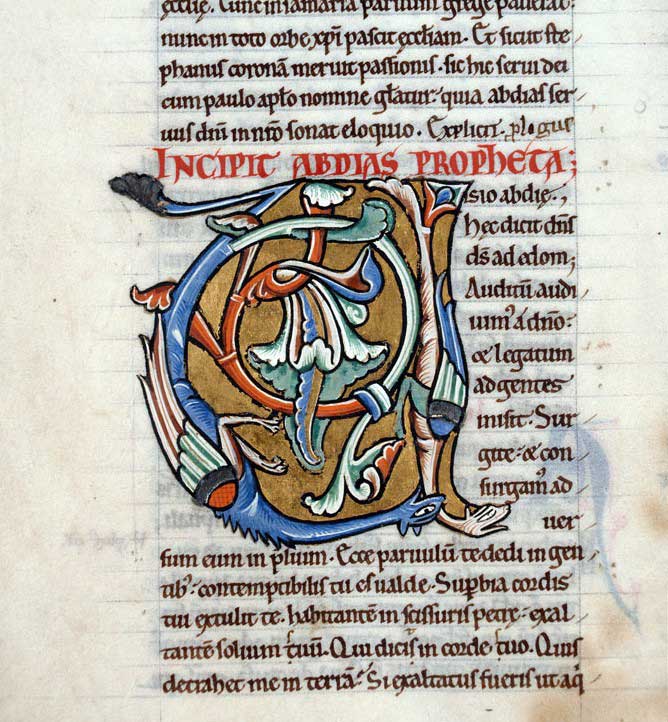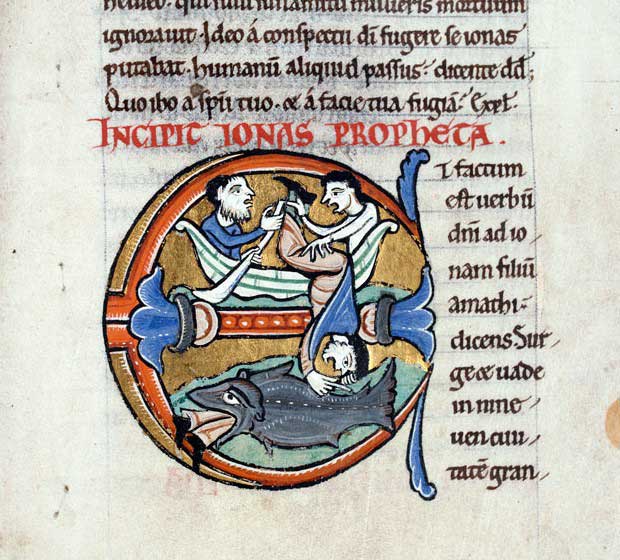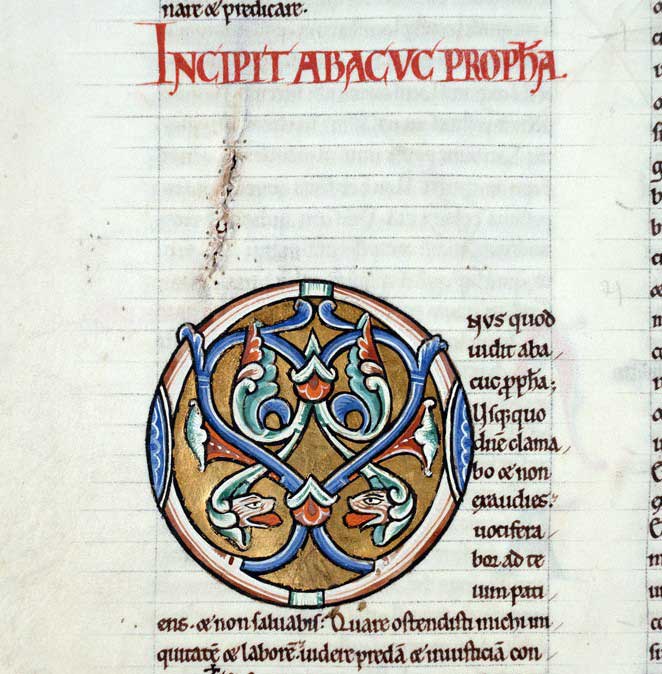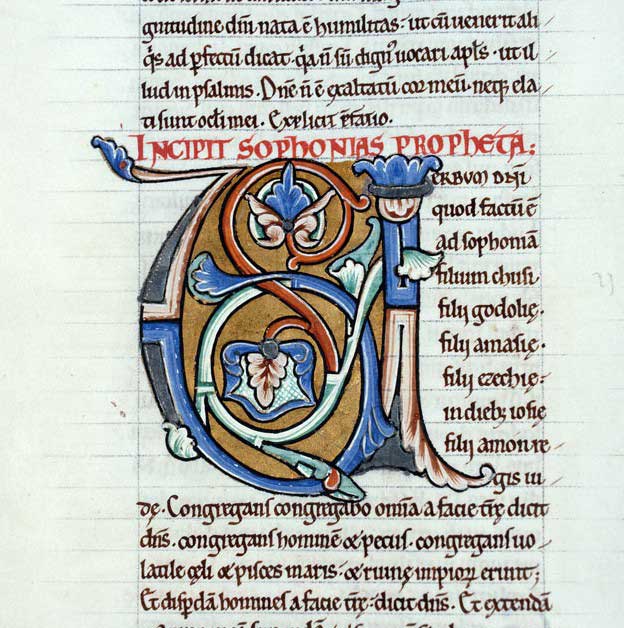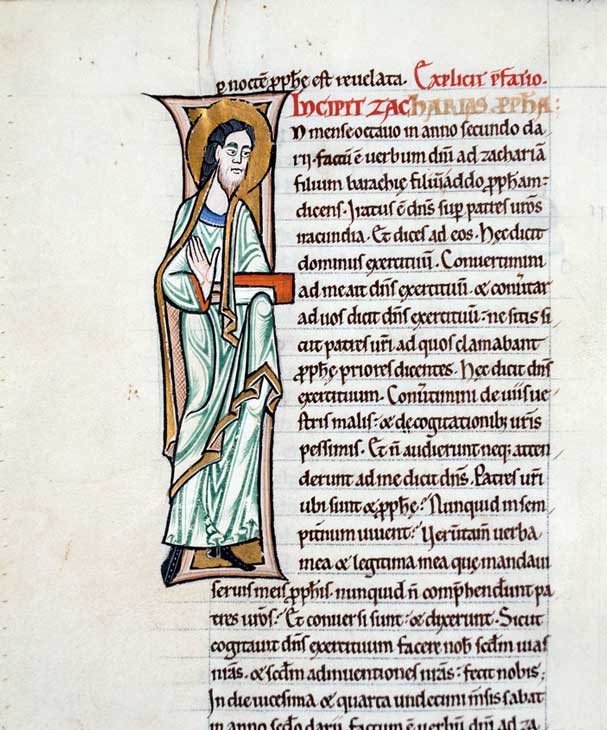While the royal portal was being built and the three large windows of the western façade were being created, the cathedral – or the abbey of St Père en Vallée, in the lower town – also produced several manuscripts whose decoration is on a par with sculpture and glass art: an artistic summit.
One of these manuscripts was the subject of a previous article (1/5). Another manuscript, now housed in the Troyes media library, probably belonged to two prestigious readers. The patron of this Bible, numbered 458, is thought to be Thibaut II of Champagne (Troyes), who was also Count of Meaux, Blois, Châteaudun… and Chartres. Thibaut II is said to have offered it to his friend Bernard de Clairvaux. A number of scholars have suggested that some of the annotations appearing in the Bible were written by St. Bernard himself. This Bible was later included in the library of the Abbey of Clairvaux.
The Chartres origin has been confirmed by Patricia Stirnemann, a researcher at the Institut de Recherche et d’Histoire des Textes, who has made the connection with several previously catalogued works. This Bible comprises two volumes (the first with Genesis and the Minor Prophets) and appears to have been written between 1140 and 1155.
Ornate letters use a variety of motifs, the most common of which are scrolls and dragons. The leaves are frequently inspired by acanthus. Some letters at the head of a biblical book also depict scenes from the story.
« To create their works, illuminators used brushes made from a few hairs of ox, marten or squirrel, rags to wipe brushes and feathers, and mortars to crush the pigments that would go into the composition of the inks. Red ink is based on a lead oxide called minium. Black ink is obtained by dissolving lampblack or other carbons in water. Black ink, known as metallo-gallic, mixes solvents such as vitriol with vegetable tannins such as oak galls. Blue ink is obtained by grinding a stone imported from Central Asia, lapis lazuli; green ink from a bright green stone, malachite.
The oldest colors come from earths, such as clay, which provides ochres, and kaolin or white clay, which can be powdered and mixed with another pigment. But generally speaking, colors don’t mix. Painting is done tone-on-tone, once the previous color has dried. Sometimes, illuminators glue on a thin sheet of gold before painting. In this case, as with inks and colors, the addition of a binder is essential for the paint to adhere to the parchment surface. This can be gum arabic, derived from the Arabian acacia tree, albumen or egg white, or fish glue ». – Educational file / Académie de Reims
Selection of the most beautiful letters:
